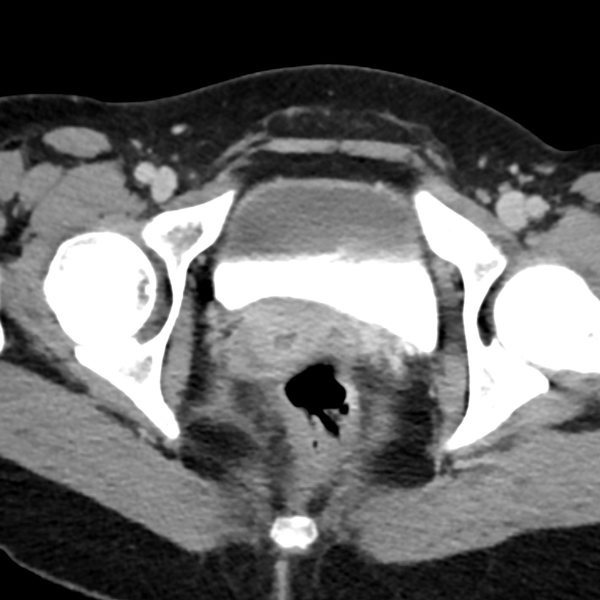From the July 2012 issue of Pediatric Emergency Medicine Practice, “Diagnosing and Managing Ovarian and Adnexal Torsion in Children.” Reprinted with permission. To access your EMRA member benefit of free online access to all EM Practice, Pediatric EM Practice, and EM Practice Guidelines Update issues, go to ebmedicine.net/emra, call 1-800-249-5770, or send e-mail to ebm@ebmedicine.net.
- “The patient was only 6 years old; I didn't consider a gynecologic cause for her pain.”
Although gynecologic causes of abdominal pain are uncommon in children, ovarian torsion can occur at any age. The differential diagnosis for any patient with concerning symptoms needs to include ovarian torsion, regardless of age. Even premenarchal patients need a pelvic ultrasound, which can be done transabdominally. - “Since the patient was previously found to have an ovarian cyst, I didn't think we needed to reimage her.”
Ovarian cysts are known to predispose patients to ovarian torsion, especially when intermediate in size (eg, 5 cm). A patient with a previous history of an ovarian cyst and acute pelvic pain must be evaluated for ovarian torsion, and repeat ultrasound is indicated. - “She had right lower quadrant pain with vomiting, a low-grade fever, and was tender on examination. It sounded like a classic case of appendicitis, so I called the surgeon. I was surprised when they called from the operating room to tell me that her ovary was torsed.”
Ovarian torsion is frequently misdiagnosed as acute appendicitis because there is significant overlap between the clinical presentations of these 2 disorders. Before making the clinical diagnosis of appendicitis in a female, ovarian torsion should first be excluded with a pelvic ultrasound. - “She told me that the pain had been coming and going and that she'd had similar episodes of pain previously, so I didn't think it was anything serious.”
Many patients with ovarian torsion will report previous episodes of similar pain. Intermittent torsion has been well-described, and patients can have spontaneous detorsion and may not seek medical attention until they have an episode that is prolonged or more severe than they have previously experienced. A history of prior pain should actually raise your suspicion for ovarian torsion and trigger further investigation. - “She seemed to be in a fair amount of pain, but she didn't have any tenderness on examination. I discharged her, and when she came back the next day, my partner diagnosed her with ovarian torsion.”
The hallmark of ovarian torsion is abdominal pain; all other symptoms and findings can be variable. A patient with ovarian torsion may not have a significant amount of tenderness on examination, but it may be possible to palpate a pelvic mass when there is a large cyst or teratoma predisposing to the torsion. The clinical history should be enough to raise the suspicion of ovarian torsion even in the absence of physical findings, and further evaluation with ultrasound is indicated, especially in the patient with ongoing painy. - “She had an elevated CRP and her WBC count was up, so I ordered a CT to look for appendicitis. I wasn't expecting the radiologist to call and tell me that the scan showed she had a pelvic mass.”
Elevated WBC and CRP are nonspecific and may be seen in many different causes of abdominal pain, including ovarian torsion. Although they are statistically higher in appendicitis than in ovarian torsion, they are not useful in differentiating the etiology in an individual patient. Ultrasound should always be considered in the pediatric female with lower abdominal pain, since it is noninvasive, does not expose the patient to radiation, and has reasonable diagnostic accuracy for appendicitis as well as other causes of pain. - “I ordered the ultrasound, but the ovary had Doppler flow, so I thought the ovary couldn't be torsed.”
Doppler flow is not sensitive to exclude ovarian torsion, and it may actually be present in as many as two-thirds of patients with ovarian torsion. Abnormal venous flow may be more sensitive than lack of arterial flow, but it is not always reported. The ultrasound diagnosis of ovarian torsion is usually made on the basis of a combination of findings, none of which have high sensitivity individually. - “The ultrasound showed a significant ovarian enlargement, but it was bilateral, so I didn't think it could be torsion.”
Ovarian enlargement in ovarian torsion is a common finding and likely has the highest sensitivity of the various possible ultrasound abnormalities. Bilateral torsion is rare, but not unheard of. Any concerning ultrasound findings in the setting of a suspicious clinical history should trigger a consultation with gynecology. Diagnostic laparoscopy is the definitive diagnostic modality and should be considered in patients without a clear diagnosis after imaging. - “The ovary didn't have flow on the ultrasound, and my patient had been having pain constantly for 3 days. It was the middle of the night and I figured that, after this much time, there was no chance of saving the ovary, so I waited until the morning to call the gynecologist.”
Duration of symptoms has not been correlated with irreversible ischemia in ovarian torsion, and should not be used as a prognostic factor. Many patients have had their ovary salvaged even after multiple days of symptoms. With a definitive ultrasound diagnosis, the gynecologist should be called immediately and the patient prepared for the operating room, even if she has had prolonged symptoms. - “After the ultrasound showed ovarian torsion, I went to talk to the patient and her family and tell them the plan. They asked me what would happen, so I told them that she'd need to have her ovary removed.”
Although ovarian torsion has traditionally been treated with oophorectomy, recent studies have shown very good outcomes after detorsion and ovarian conservation. While this approach has not yet gained universal acceptance, an increasing number of patients are having their ovary salvaged, and this is likely to become the future standard of care.



